
Police in New York City arrested a man named Frank James who they say is the suspect behind a subway shooting that left at least 23 people injured, including 10 from gunshot wounds, in Brooklyn’s Sunset Park neighborhood on Tuesday morning. The motive behind the shooting is still unknown — though James has been linked to a YouTube channel where he posted videos frequently about racism, violence and his struggles with mental illness, and also lashed out against New York City Mayor Eric Adams, who has since vowed to deploy more police patrols and expand mental health outreach programs to combat violence. We speak with Andrew Solomon, professor of clinical medical psychology at Columbia University, who says the shooting “represents a lapse in mental health,” and calls access to mental healthcare in New York City for people in poverty and particularly people of color “disgraceful.” Solomon says the pandemic, racial injustice and global violence have exacerbated underlying problems of mental health and that the government must provide “better mental health services, but those can’t be provided by the police.” He also speaks about the rise of suicides committed by children, which he investigated in a recent New Yorker piece titled “The Mystifying Rise of Child Suicide.”
Transcript
AMY GOODMAN: We begin today’s show right here in New York, where police have arrested a man in connection with Tuesday’s subway shooting. Sixty-two-year-old Frank James was apprehended after he himself called the city’s Crime Stoppers line and told them he was at a Manhattan McDonald’s. Also, it was after bystanders said they saw James on the street and alerted officers.
This is Zack Tahhan, a 21-year-old Syrian immigrant, and his cousin, Mo Cheikh. He said they were repairing a camera system at a hardware store when they spotted James.
ZACK TAHHAN: I see the police car, police. We tell him, “This is the guy, about — this is the guy. He did the problem in the Brooklyn.”
MO CHEIKH: When we saw this guy, we were like between 70 to 80% sure: Is it him? Is it not? So we pull up the picture, the amber alert on our phones. We saw the picture. We saw. We confirmed that, between the three of us, “Oh, that’s the guy. That’s him. A hundred percent sure, that’s him.”
AMY GOODMAN: Police accuse Frank James of shooting 10 passengers on a subway car in Brooklyn. At least 13 other people were injured in the attack, which began after the gunman released two smoke grenades in a crowded train during morning rush hour on Tuesday. He’s being charged in federal court with violating a law against terrorist and other violent attacks on mass transit. He faces life in prison.
A motive behind the shooting is still unknown. James had a YouTube channel where he posted videos railing about racism, violence and his struggles with mental illness, including what he called the “horror show” of New York City’s mental health services. YouTube has since taken down the channel. This is a clip of Frank James in a post from when he said he was heading to New York.
FRANK JAMES: I’m heading back into the danger zone, so to speak, you know, and it’s triggering a lot of negative thoughts, of course, because I do suffer, have a bad severe case of post-traumatic stress after the [bleep] I’ve been through [bleep] years, man.
AMY GOODMAN: Frank James also lashed out at New York City Mayor Eric Adams in his videos. After Tuesday’s attack, Adams vowed to deploy more police patrols and expand mental health outreach programs to combat violence. This is Mayor Adams speaking on NY1.
MAYOR ERIC ADAMS: First of all, being angry does not give you the right to enter our subway system, discharge 33 rounds, striking 10 people, injuring 16 because of your actions. You don’t have that right. And I am not going to succumb to any person who believe they can attempt to harm New Yorkers because they are angry. The failure of those with mental health, homelessness, the failure of our educational system did not start January 2022. We have abandoned and betrayed New Yorkers for years. That betrayal is going to stop. And I’m committed to doing so.
AMY GOODMAN: For more, we’re joined by Andrew Solomon, professor of clinical medical psychology at Columbia University, award-winning author of several books on mental illness, including Far from the Tree: Parents, Children, and the Search for Identity and his widely acclaimed memoir, The Noonday Demon: An Atlas of Depression.
Professor Solomon, if you could start off by talking about your takeaway from the horror that took place over the last two days, but also these videos that were posted by the suspect, who repeatedly talked about the mental health hell that he confronted?
ANDREW SOLOMON: I think it’s difficult to make a clear diagnosis of the perpetrator of these horrific crimes on the basis of what he’s put forward, but he says that he’s been in the mental health system and has experience of it. There is no question that you have to be at least unhinged to undertake the kind of attack that he did and that what he has done represents a lapse in mental health.
The misfortune is that we seem to talk about mental health as though it were a matter of protecting innocent subway riders, which it is, and not as though it were a matter of assuaging the acute suffering of people who have delusions or hallucinations or an unclear grasp of reality, which it also is.
NERMEEN SHAIKH: Andrew, could you talk specifically about what the difficulties are of people accessing mental healthcare, in general, in New York City?
ANDREW SOLOMON: Access to mental healthcare in New York City is really disgraceful. There were big institutions that were closed down in the 1970s and the 1980s. Those institutions were horrific. The best known is Willowbrook. And people saw the appalling footage that was taken in Willowbrook that showed people chained to beds and sitting in their own excrement, and so on and so forth. But what was agreed was that those large institutions would be closed down, and in their place there would be community care. The community care was never established.
And so now we have hospitals for people in a state of extreme illness, and you have to go and check yourself in, unless you can be held to be a harm to yourself or to others. And essentially, what those hospitals do is warehouse people so that they aren’t out on the streets dealing with these issues. But they warehouse people fairly temporarily. They are effective at preventing people from dying by suicide, because the means to do so are confiscated. There’s very little therapy. And what doesn’t seem to exist at all are adequate programs to take people who have been in hospitals, and reintegrate them in the general community.
NERMEEN SHAIKH: And also, Andrew, what are the communities that are most vulnerable to mental illness and who have the most difficult time accessing treatment? You’ve talked about, even in your most recent piece in The New Yorker, “The Mystifying Rise of Child Suicide” — you’ve spoken of how difficult it often is even for the most affluent to access adequate mental healthcare.
ANDREW SOLOMON: Well, it certainly is difficult to adequately get healthcare for children, which is what I was writing about. It’s very difficult to get mental healthcare for children. But such care as exists tends to go to people who are privileged, not only economically but also in education, and who know how to argue with doctors who don’t want to take their children in, and who know whom to call to get the best standard of mental health. The quality of mental healthcare for people in poverty, and particularly for people of color, has been terrible. Representative Bonnie Watson Coleman, a leading member of the Congressional Black Caucus, introduced the Pursuing Mental Health Equity Act of 2020, which was supposed to improve Black access to mental health services across the country. It’s stalled in committee.
AMY GOODMAN: I wanted to read the beginning of a piece from The Daily Beast, which says, “The man sought by the NYPD in Tuesday’s subway shooting recorded a video message to Mayor [Eric] Adams in which he said he had been through the city’s mental-health system and experienced a kind of emotional violence that would make someone [quote] ‘go and get a gun and shoot [MFers].’” I mean, he said the whole words. If you can talk about what this means and what needs to happen now, Dr. Solomon, and particularly when we look not only here in New York but across the country as we — I don’t even know if we can say come out of this pandemic, but what’s happened in the last few years?
ANDREW SOLOMON: Well, what’s happened in the last few years has exacerbated underlying problems of mental health, and it’s done so through a number of mechanisms. The primary one, of course, has been people getting sick and dying. The secondary one has been the isolation in which people have been operating, and, along with that isolation, the forced intimacy with the people with whom they have sheltered or quarantined during the pandemic. There is a sense of instability in the world, which is to do with the pandemic and Black Lives Matter and Ukraine and lots of other things going on. All of these forms of instability are likely to exacerbate underlying mental health conditions. Many mental health problems result from the conjunction of an underlying vulnerability to mental health problems and external circumstances that trigger those problems. That does not explain everything, but it explains many of these problems.
And at the moment, the stimuli are enormous, and mental health services remain available only to a relatively small elite. Otherwise, you have these institutions that, as I said, are really cruel places. I mean, somebody who is an expert in this field and was at the National Institute of Mental Health said, “The worst place you can go if you’re feeling suicidal is a public mental health facility. It will push you the rest of the way toward that feeling.” And, of course, suicide and homicide are closely related. And often people who commit homicide are expressing their own despair, their own internal mental health problems, as well as expressing anger and hatred and bias.
NERMEEN SHAIKH: Andrew, could you explain what we know about — you gestured at this in your response right now — about what causes mental illness, and in particular severe mental illness, to what extent environmental factors are responsible, and to what extent unavoidable biological or chemical factors are?
ANDREW SOLOMON: Almost everyone has some degree of biological vulnerability to mental illness. And the question is whether it’s a low threshold, in which they are extremely vulnerable to mental illness, in which case the triggering external circumstances can be quite trivial, or whether it’s someone who is terrifically prone to mental illness, in which case the triggering factors have to be enormous. But almost always it’s a result of a conjunction between external stimuli and internal vulnerability. That being said, there are some people who are just chemically or physically or biologically programmed, it would seem, to mental illness. We don’t yet understand the mechanisms of that programming, but we know that it exists.
NERMEEN SHAIKH: And what are some of the misconceptions about people who are mentally ill? I mean, the Coalition [for] the Homeless has found that the large majority of people, at least in this city, in New York City, have some form of mental illness. And experts say that rather than what people fear, that those who are mentally ill are more likely to be prone to violence, that, in fact, according to this coalition and experts, homeless people who are mentally ill are more likely to be subject to violence.
ANDREW SOLOMON: Only between 3 and 4% of violent crime in the United States is committed by people who are suffering from mental illness. It’s a very small proportion, overall, of crime. But people with mental illness are more likely to commit crimes that seem strange and inexplicable to onlookers, because they’re often guided by delusions rather than by greed or avarice or rage or any of the other qualities that motivate the rest of violent crime.
To treat people who are mentally ill as criminals ahead of the time that they actually do anything would be a gross injustice. Most mentally ill people will never commit a crime, no matter what the mental illness is that they have. But there are some people with mental illness who do commit crimes. And a lot of them would not commit those crimes if they were receiving adequate supports for their illness, if they were being treated as the Americans with Disabilities Act required, if they were being treated for the illness and were being treated as disabled people and experienced the rights and privileges that go along with disability, as well as the liberation that has existed in the disability rights movement.
AMY GOODMAN: Andrew Solomon, I wanted to ask you about the clearing of homeless encampments here in New York City and across the country. Do you see mental illness being transformed into a criminal problem, as something to be dealt with by police? And, for example, after, of course, this, the natural reaction after this attack is to say the money is just going to pour into police departments across the country. Your response to this?
ANDREW SOLOMON: Well, in the first place, I think it’s important that somebody be out there paying attention to what people are posting on YouTube. There was a lot of evidence that this man was going to be involved in something troubling, and nobody was paying attention, and nobody did anything.
On a larger scale, I think criminalizing the mentally ill because some mentally ill people commit crimes is not so far away from criminalizing members of racial minorities because some people who are in racial minorities commit crime, or people in any other category that you would care to name.
I think our primary focus has to be on helping people with mental illness function, and providing context for them — work context, supportive context, medical context, ongoing contexts — in which they could be helped to function as well as they would like to function, rather than abandoning them until something like this happens.
You know, there’s an upsurge in calls for mental health services every time there’s a major random crime, every time there’s a school shooting, every time there’s what appears to be a group suicide. Every time any of the rest of these things happen, there are people saying, “We have to have better mental health services.” Well, we do have to have better mental health services, but those can’t be provided by the police. At the moment, the institution in the United States housing the largest number of mentally ill people is the correctional system of the state of California. Does that really seem like an appropriate setting for these people?
And the treatment of them, though it would have some complexity and some expense, would result in a sense not only of better public safety but of people entering the functioning economy and the functioning world who are currently marginal to it. So, treating these people makes sense not only or not primarily from a public safety standpoint, but it makes sense in terms of having a functional system in a functional country in which people are able to contribute what they have to contribute.
AMY GOODMAN: Very quickly, we don’t want to end before addressing the piece you wrote in The New Yorker, “The Mystifying Rise of Child Suicide.” Just summarize it for us.
ANDREW SOLOMON: The age of suicide has been steadily coming down for the last at least 15 years, and probably for much longer. And the rate of suicide among young people has been going up. And it was vastly exacerbated by the pandemic. The number of suicide attempts among adolescents was roughly double in 2020 what it was in 2019.
I talked to a number of families who had lost children to suicide. The rate is going up most rapidly among Black children. There’s a great increase going on there. The stories are desperate and heartbreaking. There was one story that I came across of a girl who was 5 years old and who hanged herself with her jump rope, leaving behind a note that said, “I am sad for what I do.”
What has happened to our society that children are able to conceptualize suicide? But what, more significantly, has happened that has allowed them to be successful in attempting to follow through with it? And a lot of what’s happened is access to means. We have more guns, but we also have more videos online that will show you how to kill yourself if you want to. When I was 5, I wouldn’t have known how to tie a noose or how to hang myself.
And because we have a romanticized vision of childhood, we persistently propose that children can’t really get to the point of suicide, that children don’t really do these things. But they do, and they do in greater numbers. And while the numbers have gone up for prepubertive children, they’ve skyrocketed for adolescents, where the problem is really an acute and constant one.
AMY GOODMAN: Andrew Solomon, we want to thank you for being with us, professor of clinical medical psychology at Columbia University, author of several books on mental illness, including Far from the Tree: Parents, Children, and the Search for Identity and The Noonday Demon: An Atlas of Depression. We’ll link to your piece in The New Yorker, “The Mystifying Rise of Child Suicide.”
Next up, we look at Finland and Sweden. They are considering joining NATO, a move unthinkable to many before Russia invaded Ukraine. We’ll speak with a leading Swedish peace activist. Stay with us.

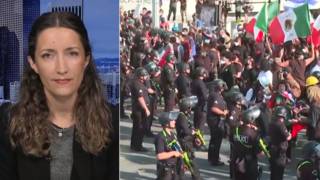
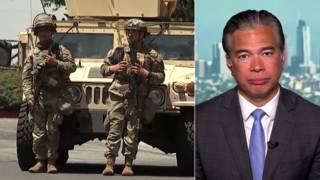
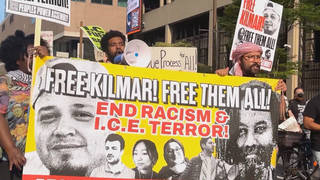
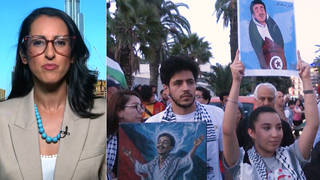
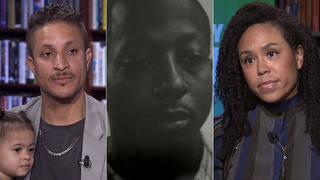

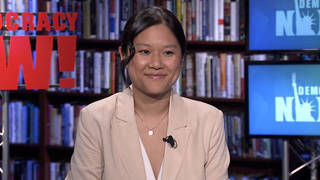
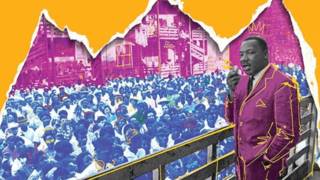

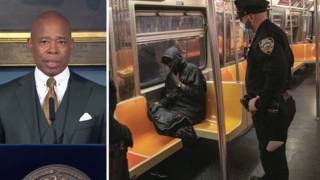


Media Options